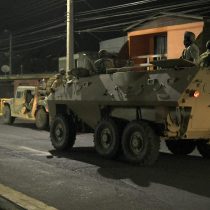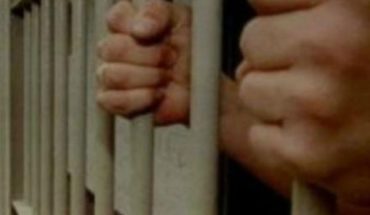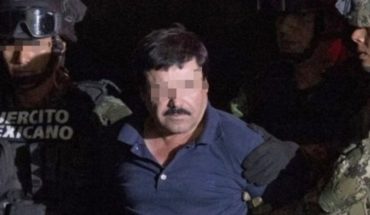
Chilean filmmaker Dominga Sotomayor denounced at the closing of the 70 version of the Berlinale the serious human rights violations that occurred in our country. The late director to die young, said on the occasion:
“At home, my family, friends and colleagues are experiencing a government crisis that banishes freedom through repression and violation of human rights.”
The testimony of Dominga Sotomayor is not very different from that given by Mon Laferte at the award ceremony of the Latin Grammys, nor from the one expressed by other artists in front of millions of viewers in the six days of the Festival of the Song of Viña del Mar.
Counter-violence and stage charisma
It is a ritual had as a moral duty. An altruistic liturgy that transcends the craft, heroism and epic consecration of those who act in front of the public. Impervious, therefore, to the skeptical imputation of egotism. A new form of political struggle. A countercultural response, exhibited in the scenarios that globalization provides and with weapons to the use of mass communication, to the symbolic violence of the repressive apparatus of the State. It criminalizes social movements, stigmatizes citizen protest and, step by step, since October 18, turns liberal democracy into a punitive system that treats people as criminals and uses the tools of a prison regime .
What symbolic counter-violence does is to unmask, in terms of collective perceptions and socially appropriate knowledge, the illegitimacy of the monopoly of violence and the use of force, and the discredit that affects those who hold power about both. What it does is to put bare that banality—invariably unvisibly invisibly by the sociology of the television inthetine—that attributes political ungovernability to violence, violence to the hooded, the hooded to those who protest, those who protest protest those who approve a new Constitution, and those who approve a new Constitution to those who seek Chile’s death, excluding them from the nation, democracy and the rule of law.
It is an ancient history in Europe, as long as it is the studies that it has motivated and the scholars who, starting with the Frenchman Pierre Bourdieu and the Italian Donatella della Porta, have approached it. It happened to the outraged, the Catalan secessionists, and then the yellow vests.
In this the mayor Felipe Guevara did not innovate in any way the symbolic violence by besiegethe square with a thousand police personnel. The procedure was held in Madrid on 25 September 2012, when protesters convened to surround the Congress of Deputies. Then 1,350 riot police were stationed whose mission was to prevent the march despite being authorized. The Spanish government spoke of the threat of a coup in disguise, as the Chilean government spoke of an internal war.
Symbolic violence and counter-violence are not preferably aimed at persuading active and customary participants of protests, whether police, serving orders and receiving a salary for it, or civilians, who if they were not convinced and aware of the risks they are taking, would not be mobilized. Rather, they are focused on unmobilized audiences who receive audio and visual data and pay attention to reliable sources of opinion.
Comedians, singers, actors or directors are reliable references, and they know it, otherwise it is not explained that they sincere their experiences and emotions with the public. At the Berlinale the auditorium hailed Dominga Sotomayor when she concluded her message. These faces possess the best charisma to counter the symbolic force—historical and institutional—of the state, including mimic political parties that have ended up stateizing their practices.
Complementary enemies
If, as Bourdieu puts it,” “symbolic violence is such violence that starts up with sumissions that are not even perceived as such based on “collective expectations,” symbolic counter-violence can only appeal to deeply rooted values to be the effective neutralization instrument for it. And so it opens up the dispute in the field of language, theory and social perceptions of the current situation.
I’m left-wing: I reject violence, wrote the literary Cristian Warnken. Dear President, the economist René Cortázar has titled his column. And it’s time for a national agreement, it was the name that former political leaders gave to their missive.
Four things have the three testimonies in common. First, they were published in the newspaper El Mercurio. Second, they were signed by former exponents of the Concertación. Third, none has gravitation in their respective political references, whether they are left, center or right. And fourth, everyone expresses the conviction that Chile is a country prey to violence and exposed to the safe risk of seeing the collective dream that mobilized it vanish. That feeling that Alberto Plaza so well condensed in his nostalgic tweet: Do you remember when the whole country, without political or social divisions, sat in front of the TV to watch the Viña festival and enjoy a wonderful family show? I got to be a part of that. It was nice while it lasted.
There is no need to doubt the sincere inspirations that nest in this belief, but there is no need to fail to examine with insight the help that its faithful give to the symbolic violence of the Government. Because, of course, this is not an innocent belief. It is not when the motivation of those who profess it is to influence public opinion and deliberately intervene in the context of a society in paradigmatic horizon change.
To condemn the left, from his self-titled leftism, Warnken invokes Germaine Tillion’s thesis, that of complementary enemies who spiral in response to a previous death. Warnken thus makes equivalent the repressive violence of the State which, in its execution as physical violence on the bodies, has claimed the dead, mutilated, tortured, detained and frightened, and the violence of the incivilities committed by the hooded, such as evasions, barricades, rants and the burning of public and private property.
But, if the scale of the Vichy regime’s state violence, which Tillion fought as a partisan of the French Resistance and whose actions of violence justified as absolutely necessary, cannot be compared to that of those who faced the occupation Nazi, the paragon applied to what is happening in Chile today is even less acceptable. In this sense, the thesis of complementary enemies, such as the concibees Mauricio García Villegas, would have more acceptance in Colombia, a country whose population has been subjected to a prolonged asymmetric war, than in Chile, where the victors have been invariably The powerful.
Retreating liberal democracy
René Cortázar urges the State to criminalize and vigorously proceed against social protests – the evasion of the secondary and the casserole of the neighbors that preceded the Metro fire – and which the former minister of Aylwin characterizes as the voice of groups violent and hooded. And when he censors the Metro fire, he doesn’t stop to explain why five months after the incident, there are still those responsible that the defense minister said he had identified to surprise us all.
Cortázar does not mention the aftermath of the state of emergency and the curfew, one of the crudest online shows of physical and symbolic violence ever seen on television screens and on social media. Unforgivable omission, because it was that repression by state agents against the unerring population, which did not happen since the crimes of Eduardo Frei Montalva and Tucapel Jiménez, which initiated a spiral of social outrage and the will of mobilization capable of bring together a million and a half people in the square, and it has not been able to be stopped so far with anything.
On the boundary, because of its apocalyptic nature, is the charter of former persons of the Concertación among those who register Senators José Miguel Insulza and Felipe Harboe who, by absenting and making the quorum impossible, caused the impeachment to fail against Mayor Guevara. They start from the shared diagnosis from the moment of the social outburst, that there is too much hatred, distrust and persistent violence in Chile, a picture that would advise an agreement with the Government to save the constituent process.
But Chile has a democracy and a constitutional rule of law that could not be threatened by legitimate demonstrations of social protest by the public. The Government, responsible for peace and security, has in place effective tools to curb police violence, to stop dismantling against public order and thus to ensure the normal development of the constituent process. The country has representative bodies, where agreements on social demands, the challenges of economic stability, peace and security have been formed and concreted.
Why then the solidarity of the exconcertacionists?
By creating the image of an external enemy, such as that of the dissident embodied in violent groups, the loyalty of the exconcertacionists contributes to the legitimization of the processes of punishment and penalization of social protest. In doing so, they seek to enlist the support of the hearings towards measures to prevent, control and restrict public demonstrations undertaken by the Government. By the way, they also contribute to inhibiting freedom of expression, assembly and displacement, but above all, at the level of collective perceptions, aim to change the political attitudes of the population.
The virtual picture of persistent violence described by the sleaths would thus justify Mario Desbordes and Fuad Chahin agreeing the secret vote for members of the constituent body, given “the number of threats and fungi” that politicians received like Insulza and Harboe. The virtual state of violence would thus lead to persevering on the change of existing legislation for the purpose of criminalizing protest, as is the case with the bill that incorporates the crime of public disorder into the Penal Code. The virtual state of violence would also expand the powers of the President of the Republic to provide control of the territory by the armed forces in the new state of constitutional alert, as noted in the infrastructure project Criticism.
None of the guarantors of peace and stability repairs, however, in the achilles heel of his account. None of them are a means of the disappearance of the interlocutor i would like to support. Because the greatest of the mistakes of this administration is discredit, discredit, the weakening of authority and the loss of governance, something that is not resolved by political agreements or calls to the use of force, but with the restoration of the respect and trust, which the President will hardly be able to climb back in the next two years.
The content poured into this opinion column is the sole responsibility of its author, and does not necessarily reflect the editorial line or position of El Mostrador.





